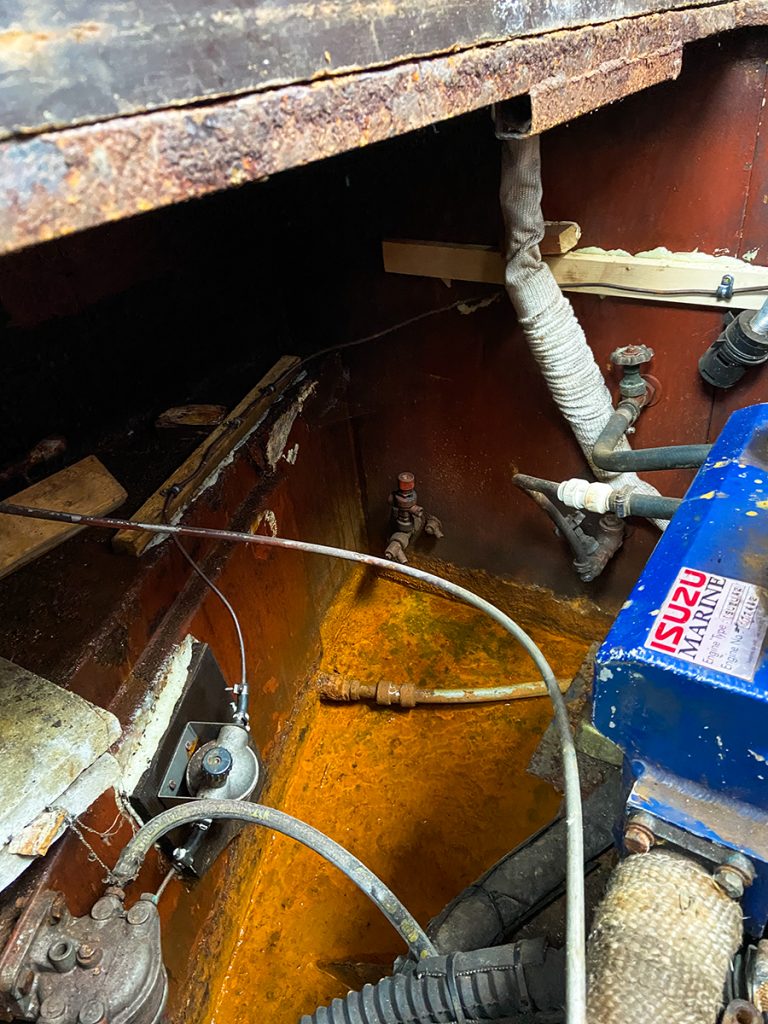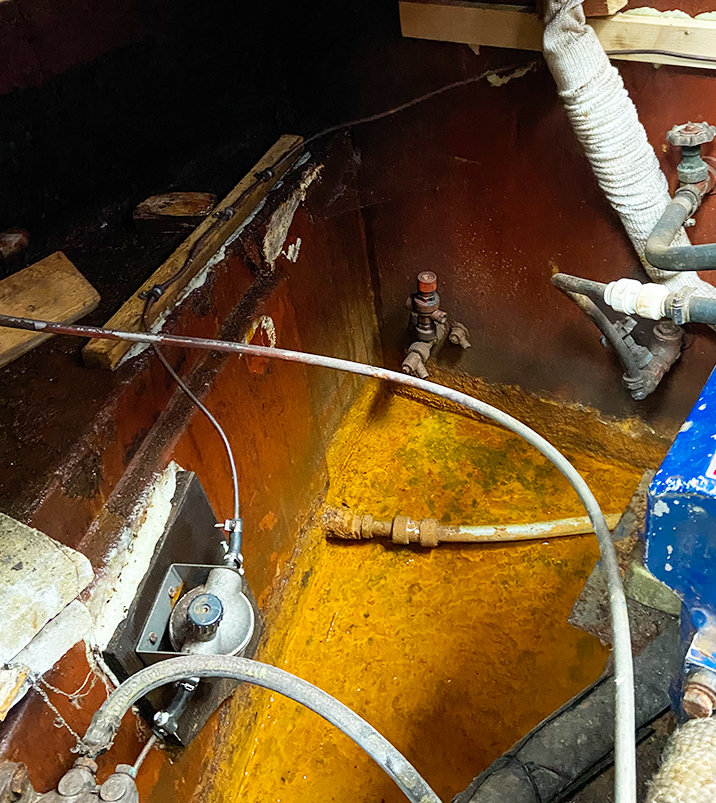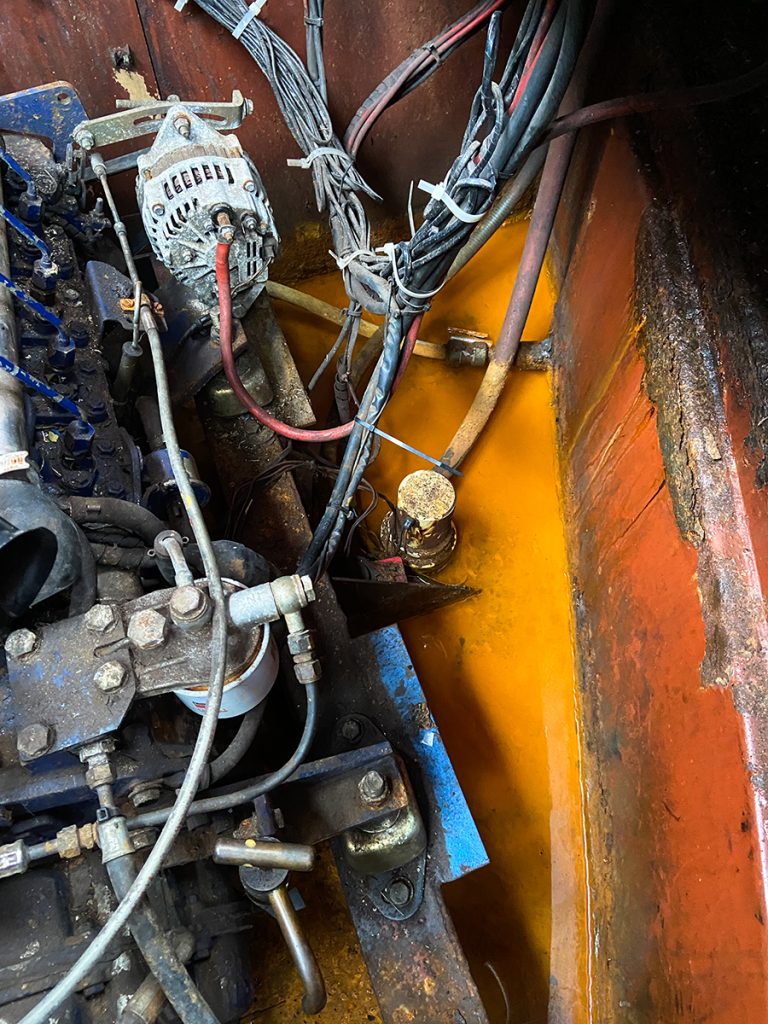We’ve Got a Leak!
We’ve got a leak! Well, not a leak. Well, it is a leak but it’s an OK one.
In general, water can build up in our engine bay bilges, at the stern of the boat. It’s what happens.
It’s been at the back of my mind for a long while now. We had been checking the bilge pump, running it and every so (randomly) often and water is pumped. It runs via the bilge pump outlet, into the canal (don’t worry, it’s permitted, it’s just water). I thought it was the rain, getting into the bilge via the stern. Some of it will be that. Some of it will not, however.
Narrowboats have Calorifiers, which is a fancy name for ‘hot water tank immersion heater combo’. It provides us with hot water via various methods. Ours is installed under our bed, which is toward the stern of the boat and not too far from the bulkhead to the engine bay. A pipe runs from the Calorifier, through the bulk head and into the engine bay. The pipe exits through the bulkhead and out into the engine bay. It has a tap type thing on it. It is this that is the culprit!
Dripping…
This morning, I lifted up the flooring to the engine bay and clearly saw this tap contraption dripping water, regularly into the bilge.
I discussed this with Whilton Marina to confirm my suspicions. Yes, this is correct and it is what is supposed to happen. With an automatic bilge pump, any water is removed, as outlined above. Ours is manual only so when we run it, if there’s any water built up, the pump voids it into the canal.
The trouble is, a bilge pump never gets rid of every last drop of water, there is a threshold which has to be reached before it can work. A little amount of water is always left.
So, what we can do is have a ’skin fitting’ (no, it’s not a body piercing) put into the side of the hull and have the Calorified pressure outlet pipe (the tap-like thing) connected to void the water automatically, out of the boat. Cut out the middleman – the bilge pump.
We’re going to get this done.
Update
Update – this wasn’t required! A new PRV was installed, the leak stopped. With this being a safety valve, there wouldn’t normally be water being released into the bilge so we decided to leave it ‘as is’. We had purchased a battery-operated hand pump and it managed to get rid of most of the water. It’s been absolutely fine ever since.
Hooray! It’s a leak that’s OK on a boat 🙂
rp – peace and narrowboats


